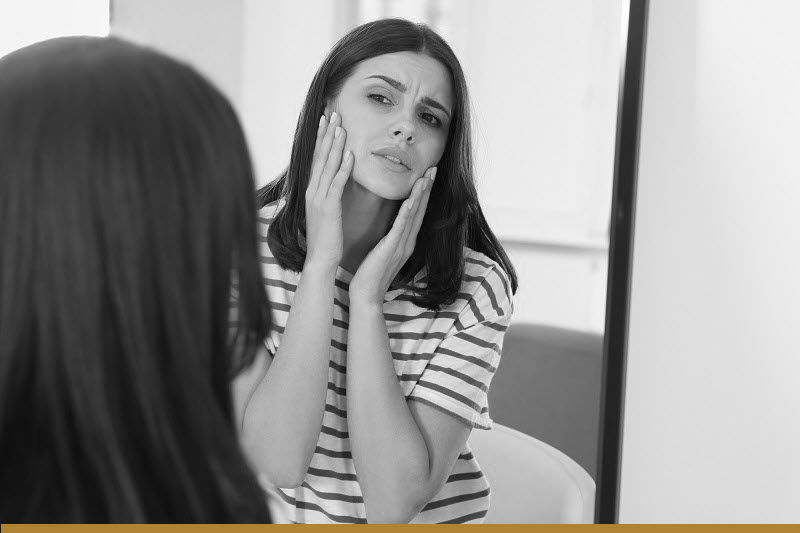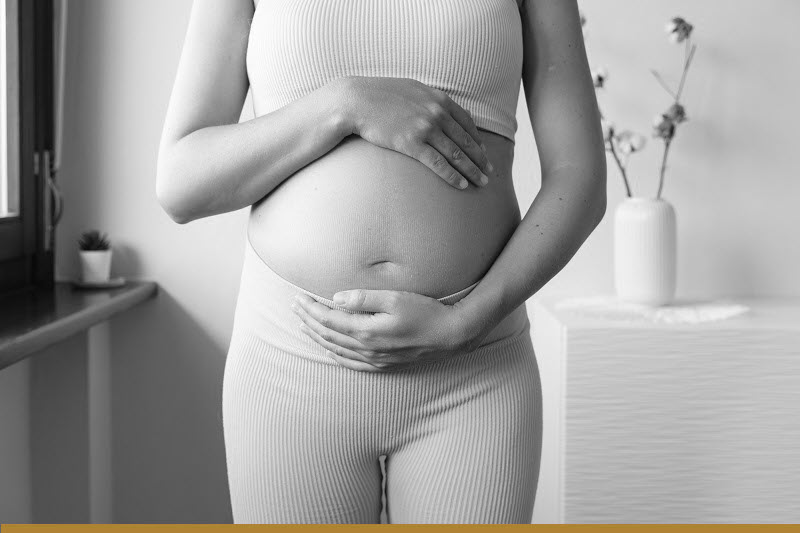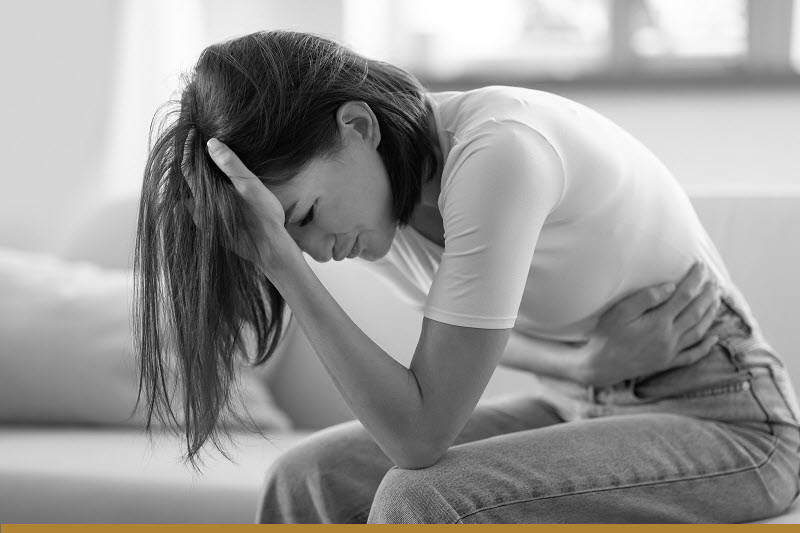Estrogen and progesterone are female sex hormones that regulate the development of female sex characteristics and the reproductive system. These hormones are also present in men in small amounts, controlling their sexual function. Besides their sexual and reproductive functions, estrogen and progesterone also affect our brain, bones, muscles, skin, immunity, and cardiovascular health.
This article focuses on the differences between estrogen and progesterone, shedding light on their unique roles and how they work together.

Estrogen is a sex hormone primarily responsible for stimulating the development of female sexual features, maintaining the menstrual cycle, and preparing the uterus for pregnancy. Its production significantly increases during puberty and fluctuates through different periods and life phases.
The three main forms of estrogen include:
Progesterone is a sex hormone primarily responsible for maintaining pregnancy. Its secretion increases in puberty, peaks in pregnancy, and decreases after menopause. In men, progesterone levels are relatively stable throughout life. The hormone regulates the development of sperm cells and the production of testosterone.
The following table summarizes the differences between estrogen and progesterone.
| Estrogen | Progesterone | |
|---|---|---|
| Production | In women: Primarily ovaries, adrenal glands, fat cells, and placenta. In men: Primarily testes, fat cells, and adrenal glands. | In women: Corpus luteum, placenta, adrenal glands. In men: Testes and adrenal glands. |
| Regulation | Follicle-stimulating hormone (FSH) helps regulate estrogen. | Luteinizing hormone (LH) helps regulate progesterone. |
| Puberty | In girls: Initiates the development of female sex characteristics and helps regulate menstruation. In boys: Regulates skeletal growth and final height. | In girls: Helps regulate the menstrual cycle and breast development. In boys: Contributes to sperm maturation and testosterone formation. |
| Menstrual cycle | Levels increase in the first half of the cycle, leading to ovulation. | Levels increase after ovulation and lead to menstruation. |
| Pregnancy | Helps the egg release and prepares the uterus for pregnancy. | Helps sustain pregnancy. |
| Birth control | Estrogen-progestin pills: Effectively stop ovulation and prevent sperm from reaching the egg. | Progestin-only pills: Slightly less effective at preventing ovulation. Prescribed to patients who can’t take estrogen. |
| Menopause | Estrogen declines, causing hot flashes, irregular periods, vaginal dryness, weight gain, etc. | Progesterone declines, causing mood changes, anxiety, insomnia, etc. |
| Side effects of therapy | Headache Nausea Abdominal pain Bloating Tender breasts Weight gain Hair loss Hyperpigmentation Vaginal bleeding Increased risk of cervical and breast cancer | Headaches Nausea Dizziness Ovarian cysts Hormonal acne Oily skin Irritability Depression Fatigue Decreased libido Vaginal bleeding |
| Non-reproductive functions | Helps regulate: Bone density Muscle mass Heart health Brain function Lipid metabolism Glucose balance Skin health | Helps regulate: Bone density Nervous system Mood Memory Immune function |
The following glands and organs are responsible for estrogen and progesterone production.
Estrogen
During the reproductive years, the ovaries in women primarily secrete estrogen, while the testes in men primarily secrete testosterone, some of which is converted to estrogen. The adrenal glands, fat cells in adipose tissue, brain, liver, heart, and skin also produce estrogen in smaller amounts in both sexes. During pregnancy, the placenta takes over estrogen synthesis. After menopause, the adrenal glands and fat cells are the main sources of estrogen.
Progesterone
During the reproductive years in women, progesterone is produced by a temporary gland called the corpus luteum. It forms from the empty follicular sac left after an egg is released. During pregnancy, the placenta takes over progesterone production. After menopause, the overall levels of progesterone decline significantly, with the adrenal glands producing small amounts of progesterone.
In men, the testes and adrenal glands produce small amounts of progesterone.
Before puberty, the hypothalamus begins to release a hormone called gonadotropin-releasing hormone (GnRH), which stimulates the pituitary gland to produce follicle-stimulating hormone (FSH) and luteinizing hormone (LH). They are crucial for regulating the production of estrogen and progesterone, but their levels are low before puberty.
When puberty starts, typically between the ages of eight and ten, the hypothalamus increases the release of GnRH, causing the pituitary gland to increase the production of FSH and LH. This stimulates the development of ovarian follicles, which synthesize estrogen and progesterone.
Estrogen
Follicle-stimulating hormone (FSH) helps regulate estrogen production by stimulating the growth and maturation of ovarian follicles, which synthesize estrogen as they develop.
Progesterone
Luteinizing hormone (LH) initiates ovulation and the formation of corpus luteum, which forms from a ruptured follicle after ovulation. The corpus luteum then makes progesterone to prepare the uterus for pregnancy.

The significant increase in estrogen and progesterone levels starting in puberty marks the beginning of the reproductive phase.
Estrogen
The secretion of estrogen initiates the development of female sex characteristics in girls, including the widening of hips, growth of breasts, pubic and underarm hair, and the differentiation of sex organs, such as the uterus and vagina. The hormone also regulates the menstrual cycle. In pubertal boys, estrogen sparks skeletal growth and determines boys’ height.
Progesterone
Progesterone plays a role in breast development, increasing the number of milk-producing sacs (called lobular alveoli) at the ends of milk ducts. Progesterone is also responsible for regulating the menstrual cycle. In boys, it contributes to sperm maturation and is a precursor to testosterone.
Estrogen and progesterone are essential in regulating the menstrual cycle. Each hormone’s effects are exerted at different stages of the cycle.
Estrogen
Estrogen levels are higher during the first half of the cycle, called the follicular phase. They peak just before ovulation (the release of eggs from the ovaries) and then slightly decrease.
Progesterone
Progesterone levels increase after ovulation during the second half of the cycle, called the luteal phase. They peak about one week before menstruation and, if pregnancy doesn’t occur, they drop, leading to the shedding of the uterine lining and menstruation.

Estrogen and progesterone have unique and complementary roles in pregnancy.
Estrogen
Estrogen is responsible for preparing the body for pregnancy. It stimulates the growth of the uterine lining to support a fertilized egg and thins the cervical mucus to facilitate the sperm to reach the egg. It increases blood flow to the uterus, helping in the development of the fetus. Estrogen also helps prepare the breasts for breastfeeding by stimulating the proliferation of ductal cells, which form the milk ducts.
Progesterone
If pregnancy occurs, progesterone further thickens the uterus lining, preparing it to accept a fertilized egg. The hormone also prevents uterine contractions that could harm the egg. After the placenta forms, it maintains high progesterone levels, suspending ovulation. Progesterone also helps prepare the breasts for breastfeeding by stimulating the proliferation of acinar cells, which are responsible for producing milk.
Doctors typically prescribe birth control pills to women who don’t want to become pregnant or those with specific conditions caused by estrogen and progesterone imbalances. Levels that are too high or too low can cause minor or substantial disruptions to daily life, including excessive sweating, irregular periods, sudden weight gain, hormonal acne, hirsutism (hair loss), mood changes, and more.
There are two types of birth control pills:
Estrogen and progesterone levels significantly decrease around menopause.
Estrogen
The ovaries greatly reduce estrogen production around menopause. The adrenal glands and fat cells become the primary source of estrogen, but their cannot produce the same amounts as the ovaries did during the reproductive years. Low estrogen is the leading cause of most menopausal symptoms, including hot flashes, night sweats, irregular periods, low libido, weight gain, bone loss, etc.
Progesterone
Progesterone levels decrease with age and menopause. As the ovaries stop the production of sex hormones, the adrenal glands become the primary source of progesterone. Low progesterone levels in menopause contribute to mood changes, anxiety, insomnia, muscle and joint pain, etc.
Note: Hormone replacement therapy (HRT) is an effective treatment for menopause symptoms. Learn more about bioidentical hormone replacement therapy, which uses bioidentical hormones to relieve symptoms of declining estrogen and progesterone.

Birth control pills and hormone replacement treatments can cause certain side effects.
Estrogen
Pills and HRT containing estrogen may cause:
Extended use of estrogen therapy, particularly when not balanced with progesterone, is linked to an increased risk of endometrial (uterine) and breast cancer. However, the relationship between estrogen therapy and cervical cancer is less clear and requires further research.
Note: Learn how to stop hormonal hair loss and what hormones are responsible for this condition.
Progesterone
Progestin-only pills may cause:
Most side effects tend to decrease over time as the body adjusts to the hormones.
Estrogen and progesterone functions extend beyond the reproductive system.
Estrogen
Estrogen helps control various bodily processes, including:
Progesterone
Progesterone supports the following functions:
Estrogen and progesterone levels naturally fluctuate during certain phases in a woman’s life: puberty, menstrual cycles, pregnancy, and menopause. Estrogen is higher during the first half of the menstrual cycle, and progesterone is higher in the second half. These two hormones need to be in balance relative to one another to function properly.
In males, estrogen and progesterone levels are lower and generally stable throughout life but also decrease with age.
Estrogen and progesterone levels that are lower or higher than optimal for a person's specific life phase and sex can lead to various health concerns, including infertility, weight gain, depression, insomnia, etc.
Estrogen and progesterone work together to regulate the reproductive system and help support other bodily processes. Each hormone has a unique role that maintains a balanced hormonal environment. High or low levels lead to a host of health issues, potentially causing severe illness.
If you suspect your medical concerns may be related to a hormonal imbalance, read our articles on the best supplements to balance hormones and ways to increase estrogen.
Visit our medical professionals at Vibrant Vitality Clinic for a more focused, personalized approach to improving your health.




4325 E Indian School Rd, Suite 130
Phoenix, AZ 85018
United States
(480) 422-2058
info@vibrantvitalityclinic.com
Monday - Friday: 9:00 am - 6:00 pm
Saturday: 9:00 am - 3:00 pm
Sunday: Closed
